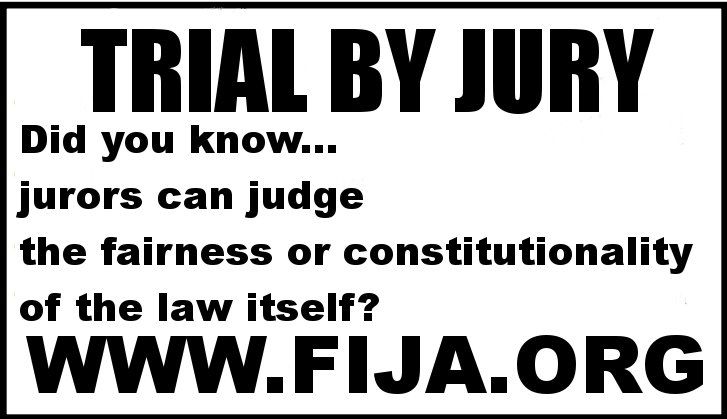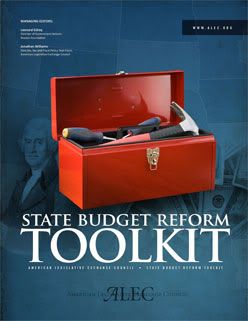Today is National Pet Day, and, in honor of that, here are some tips to consider when making your emergency plan for your family that include your furry, or not so furry, members of your family:
When creating a disaster plan for your family - don't forget your pets. While you are away from home, confining your pet to a specific room in the house can aid rescuers in the event of a structure fire or other disaster. Place emergency stickers with the number and location of your pets in prominent places near doors and windows. Close interior doors to keep fire from spreading. If you change the location of the pets, remember to change the information on the emergency stickers.
Here are some websites you can refer to as resources for including pets in your emergency plan. (Below that is information for creating an emergency plan for your family in case you haven't done that).
PET EMERGENCY PLAN RESOURCES
[American Red Cross] Your Plan Should Include All Family Members
ASPCA: Disaster Preparedness
[CDC] Disaster Preparedness for your Pet
[FEMA] Prepare for Emergencies Now: Information for Pet Owners
[READY.GOV] Pet and Animal Emergency Planning
[RED ROVER] Pet Disaster Preparedness
EMERGENCY PLAN RESOURCES FOR YOUR FAMILY
[CDC] Make a Plan
[NC Dept of Public Safety] Emergency Preparedness
[READY.GOV] Make a Plan
[SC Emergency Management Division] Family Disaster Planning
Why talk about a Family Disaster Plan?
- Disaster can strike quickly and without warning. It can force you to evacuate your neighborhood or confine you to your home. What would you do if basic services, such as water, gas, electricity, or telephones were cut off? Local officials and relief workers will be on the scene after a disaster, but they cannot reach everyone right away.
- Families can and do cope with disaster by preparing in advance and working together as a team. Knowing what to do is your best protection and your responsibility. Learn more about Family Disaster Plans by contacting your local emergency management office or your local American Red Cross chapter.
Awareness Information
- A National Weather Service (NWS) WATCH is a message indicating that conditions favor the occurrence of a certain type of hazardous weather. For example, a severe thunderstorm watch means that a severe thunderstorm is expected in the next six hours or so within an area approximately 120 to 150 miles wide and 300 to 400 miles long (36,000 to 60,000 square miles). The NWS Storm Prediction Center issues such watches. Local NWS forecast offices issue other watches (flash flood, winter weather, etc.) 12 to 36 hours in advance of a possible hazardous-weather or flooding event. Each local forecast office usually covers a state or a portion of a state.
- An NWS WARNING indicates that a hazardous event is occurring or is imminent in about 30 minutes to an hour. Local NWS forecast offices issue warnings on a county-by-county basis.
Four Steps to Safety
Complete four steps to safety. There are four basic steps to developing a family disaster plan:
1. Find out what could happen to you. By learning what your risks may be, you can prepare for the disaster most likely to occur in your area. Learn more by contacting your local emergency management office or American Red Cross chapter. Be prepared to take notes. Ask the following:
2. Create a Family Disaster Plan. Once you know what disasters are possible in your area, talk about how to prepare and how to respond if one occurs. Make checklists of steps you can take as you discuss this information with your family.What type of disasters are most likely to happen in your community? Identify which human-caused or technological disasters can affect your region, too. Remember to consider major chemical emergencies that can occur anywhere chemical substances are stored, manufactured, or transported. How should you prepare for each? Does your community have a public warning system? What do your community’s warning signals sound like and what should you do when you hear them? What about animal care after disaster? Pets (other than service animals) are not permitted in places where food is served, according to many local health department regulations. Plan where you would take your pets if you had to go to a public shelter where they are not permitted. If you care for elderly or disabled persons, how can you help them? What might be some special needs to consider? What are the disaster plans at your workplace, your children’s school or day care center, and other places where members of your family spend time? You should be prepared wherever you may be when disaster strikes and learn steps you can take to prevent or avoid disasters.
Here is how to create your Family Disaster Plan:
3. Complete your checklists. Take the steps outlined in the checklists you made when you created your Family Disaster Plan. Remember to include the following items on your checklists.Meet with your family and discuss why you need to prepare for disaster. Explain the dangers of fire, severe weather, and earthquakes to children. Plan to share responsibilities and work together as a team. Keep it simple enough so people can remember the important details. A disaster is an extremely stressful situation that can create confusion. The best emergency plans are those with very few details. Discuss the types of disasters that are most likely to happen. Explain what to do in each case. Everyone should know what to do in case all family members are not together. Discussing disasters ahead of time will help reduce fear and anxiety and will help everyone know how to respond. Pick two places to meet: Right outside of your home in case of a sudden emergency, like a fire. Outside of your neighborhood in case you can’t return home or are asked to leave your neighborhood. Everyone must know the address and phone number of the meeting locations. Develop an emergency communication plan. In case family members are separated from one another during floods or other disasters, have a plan for getting back together. Separation is a real possibility during the day when adults are at work and children are at school. Ask an out-of-town relative or friend to be your "family contact." Your contact should live outside of your area. After a disaster, it is often easier to make a long distance call than a local call. Family members should call the contact and tell him or her where they are. Everyone must know the contact’s name, address, and phone number. Discuss what to do if authorities ask you to evacuate. Make arrangements for a place to stay with a friend or relative who lives out of town and/or learn about shelter locations. Be familiar with escape routes. Depending on the type of disaster, it may be necessary to evacuate your home. Plan several escape routes in case certain roads are blocked or closed. Remember to follow the advice of local officials during evacuation situations. They will direct you to the safest route; some roads may be blocked or put you in further danger. Plan how to take care of your pets. Pets (other than service animals) are not permitted to be in places where food is served, according to many local health department regulations. Plan where you would take your pets if you had to go to a public shelter where they are not permitted.
4. Practice and maintain your plan. Practicing your plan will help you instinctively make the appropriate response during an actual emergency. You will need to review your plan periodically and you may need to change some parts.Post by phones emergency telephone numbers (fire, police, ambulance, etc.). You may not have time in an emergency to look up critical numbers. Teach all responsible family members how and when to turn off the water, gas, and electricity at the main switches or valves. Keep necessary tools near gas and water shut-off valves. Turn off utilities only if you suspect a leak or damaged lines, or if you are instructed to do so by authorities. If you turn the gas off, you will need a professional to turn it back on. Paint shut-off valves with white or fluorescent paint to increase visibility. Attach a shut-off valve wrench or other special tool in a conspicuous place close to the gas and water shut-off valves. Check if you have adequate insurance coverage. Ask your insurance agent to review your current policies to ensure that they will cover your home and belongings adequately. Homeowner’s insurance does not cover flood losses. If you are a renter, your landlord’s insurance does not protect your personal property; it only protects the building. Renters’ insurance pays if a renter’s property is damaged or stolen. Renters’ insurance costs less than $15 a month in most areas of the country. Contact your insurance agent for more information. Install smoke alarms on each level of your home, especially near bedrooms. Smoke alarms cut nearly in half your chances of dying in a home fire. Smoke alarms sense abnormal amounts of smoke or invisible combustion gases in the air. They can detect both smoldering and flaming fires. Many areas are now requiring hard-wired smoke alarms in new homes. Get training from the fire department on how to use your fire extinguisher (A-B-C type), and show family members where extinguishers are kept. Different extinguishers operate in different ways. Unless responsible family members know how to use your particular model, they may not be able to use it effectively. There is no time to read directions during an emergency. Only adults should handle and use extinguishers. Conduct a home hazard hunt. During a disaster, ordinary objects in your home can cause injury or damage. Anything that can move, fall, break, or cause a fire is a home hazard. For example, during an earthquake or a tornado, a hot water heater or a bookshelf could turn over or pictures hanging over a couch could fall and hurt someone. Look for electrical, chemical, and fire hazards. Contact your local fire department to learn about home fire hazards. Inspect your home at least once a year and fix potential hazards. Stock emergency supplies and assemble a Disaster Supplies Kit. (See the "Disaster Supplies Kit" section.) Keep enough supplies in your home to meet your needs for at least three days. Assemble a Disaster Supplies Kit with items you may need in case of an evacuation. Store these supplies in sturdy, clearly labeled, easy-to-carry containers, such as backpacks or duffel bags. Keep a smaller Disaster Supplies Kit in the trunk of your car. (See the "Disaster Supplies Kit" section.) If you become stranded or are not able to return home, having these items will help you to be more comfortable. Keep a portable, battery-operated radio or television and extra batteries. Maintaining a communications link with the outside is a step that can mean the difference between life and death. Make sure that all family members know where the portable, battery-operated radio or television is located, and always keep a supply of extra batteries. Consider using a NOAA Weather Radio with a tone-alert feature. NOAA Weather Radio is the best means to receive warnings from the National Weather Service. The National Weather Service continuously broadcasts updated weather warnings and forecasts that can be received by NOAA Weather Radios, which are sold in many stores. NOAA Weather Radio now broadcasts warning and post-event information for all types of hazards both natural (such as weather and flooding, as well as earthquakes and volcanic activity) and technological (such as chemical releases or oil spills). Working with other federal agencies and the Federal Communications Commission’s new Emergency Alert System, NOAA Weather Radio is an "all hazards" radio network, making it the single source for the most comprehensive weather and emergency information available to the public. Your National Weather Service recommends purchasing a NOAA Weather Radio that has both a battery backup and a Specific Area Message Encoder (SAME) feature, which automatically alerts you when a watch or warning is issued for your county, giving you immediate information about a life-threatening situation. The average range is 40 miles, depending on topography. The NOAA Weather Radio signal is a line-of-sight signal, which does not bore through hills or mountains. Take a Red Cross first aid and CPR class. Have your family learn basic safety measures, such as CPR and first aid. These are critical skills, and learning can be a fun activity for older children. Plan home escape routes. Determine the best escape routes from your home in preparation for a fire or other emergency that would require you to leave the house quickly. Find two ways out of each room. Find the safe places in your home for each type of disaster. Different disasters often require different types of safe places. While basements are appropriate for tornadoes, they could be deadly in a major chemical emergency. Make two photocopies of vital documents and keep the originals in a safe deposit box. Keep one copy in a safe place in the house, and give the second copy to an out-of-town friend or relative. Vital documents such as birth and marriage certificates, tax records, credit card numbers, financial records, and wills and trusts can be lost during disasters. Make a complete inventory of your home, garage, and surrounding property. The inventory can be either written or videotaped. Include information such as serial numbers, make and model numbers, physical descriptions, and price of purchases (receipts, if possible). This list could help you prove the value of what you owned if your possessions are damaged or destroyed and can help you to claim deductions on taxes. Be sure to include expensive items such as sofas, chairs, tables, beds, chests, wall units, and any other furniture too heavy to move. Do this for all items in your home, on all levels. Then store a copy of the record somewhere away from home, such as in a safe deposit box.
Quiz your kids every six months so they remember what to do, meeting places, phone numbers, and safety rules. Conduct fire and emergency evacuation drills at least twice a year. Actually drive evacuation routes so each driver will know the way. Select alternate routes in case the main evacuation route is blocked during an actual disaster. Mark your evacuation routes on a map; keep the map in your Disaster Supplies Kit. Remember to follow the advice of local officials during evacuation situations. They will direct you to the safest route, away from roads that may be blocked or put you in further danger. Replace stored food and water every six months. Replacing your food and water supplies will help ensure freshness. Use the test button to test your smoke alarms once a month. The test feature tests all electronic functions and is safer than testing with a controlled fire (matches, lighters, or cigarettes). If necessary, replace batteries immediately. Make sure children know what your smoke alarm sounds like. If you have battery-powered smoke alarms, replace batteries at least once a year. Some agencies recommend you replace batteries when the time changes from standard daylight savings each spring and again in the fall. "Change your clock, change your batteries," is a positive theme and has become a common phrase. While replacing batteries this often certainly will not hurt, available data show that batteries will last at least a year, so more frequent replacement is not necessary, and time does not change in Arizona, Hawaii, the eastern portion of Indiana, Puerto Rico, American Samoa, and Guam. Replace your smoke alarms every 10 years. Smoke alarms become less sensitive over time. Replacing them every 10 years is a joint recommendation by the National Fire Protection Association and the U.S. Consumer Products Safety Commission. Look at your fire extinguisher to ensure it is properly charged. Fire extinguishers will not work properly if they are not properly charged. Use the gauge or test button to check proper pressure. Follow manufacturer’s instructions for replacement or recharging fire extinguishers. If the unit is low on pressure, damaged, or corroded, replace it or have it professionally serviced.
What to Tell Children
- Tell children that a disaster is something that happens that could hurt people, cause damage, or cut off utilities such as water, telephones, or electricity. Explain to them that nature sometimes provides "too much of a good thing"--fire, rain, wind, snow. Talk about typical effects that children can relate to, such as loss of electricity, water, and telephone service.
- Give examples of several disasters that could happen in your community. Help children recognize the warning signs for the disasters that could happen in your community.Discussing disaster ahead of time reduces fear and anxiety and lets everyone know how to respond.
- Teach children how and when to call for help. Check the telephone directory for local emergency telephone numbers. If you live in a 9-1-1 service area, teach children to call 9-1-1. At home, post emergency telephone numbers by all phones and explain when to call each number. Even very young children can be taught how and when to call for emergency assistance. If a child can’t read, make an emergency telephone number chart with pictures that may help the child identify the correct number to call.
- Explain that when people know what to do and practice in advance, everyone is better able to handle emergencies. That’s why you need to create a Family Disaster Plan.
- Have older children take a first aid and CPR course. These are critical skills, and learning can be a fun activity.
- Tell children that in a disaster there are many people who can help them. Talk about ways that an emergency manager, Red Cross volunteer, police officer, firefighter, teacher, neighbor, doctor, or utility worker might help following a disaster.
- Teach children to call your family contact in case they are separated from the family in an emergency. Help them memorize the telephone number, or write it down on a card that they can keep with them.
Remember Your Pets
- Plan how to take care of your pets. If you must evacuate, it is best to take your pets with you. However, pets (other than service animals) are not permitted in public shelters, according to many local health department regulations and because of other considerations.
- Contact hotels and motels outside of your immediate area to check their policies on accepting pets and restrictions on the number, size, and species. Ask if "no pet" policies could be waived in an emergency.
- Ask friends, relatives, or others outside of the affected area whether they could shelter your animals. If you have more than one pet, they may be more comfortable if kept together, but be prepared to house them separately.
- Prepare a list of boarding facilities and veterinarians who could shelter animals in an emergency; include 24-hour phone numbers. Ask local animal shelters if they provide emergency shelter or foster care for pets in a disaster. Animal shelters may be overburdened, so this should be your last resort.
- Keep a list of "pet friendly" places, including their phone numbers, with other disaster information and supplies. If you have notice of an impending disaster, call ahead for reservations.
- Carry pets in a sturdy carrier. Animals may feel threatened by some disasters and become frightened or try to run.
- Have identification, collar, leash, and proof of vaccinations for all pets. Veterinarian records may be required by some locations before they will allow you to board your pets. If your pet is lost, identification will help officials return it to you.
- Assemble a portable pet disaster supplies kit. Keep food, water, and any special pet needs in an easy-to-carry container.
- Have a current photo of your pets in case they get lost.
- As a last resort, if you absolutely must leave your pets behind, prepare an emergency pen in the home that includes a three-day supply of dry food and a large container of fresh water.
Media and Community Education Ideas
- Meet with your neighbors to plan how the neighborhood could work together after a disaster until help arrives. Working with neighbors can save lives and property. If you’re a member of a neighborhood organization, such as a homeowner’s association or crime watch group, introduce disaster preparedness as a new activity. Check with your local fire department to find out if they offer Community Emergency Response Team (CERT) training.
- Know your neighbors’ special skills (for example, medical, technical) and consider how you could help neighbors who have special needs, such as disabled and elderly persons.
- Identify elderly and disabled people in the neighborhood. Ask them how you can help if a disaster threatens (transportation, securing the home, getting medications, etc.).
- Make plans for child care in case parents can’t get home.
Evacuation
- Evacuate immediately if told to do so. Authorities do not ask people to leave unless they truly feel lives may be in danger. Follow their advice.
- Listen to local radio or television and follow the instructions of local emergency officials. Local officials will provide you with the most appropriate advice for your particular situation.
- Wear protective clothing and sturdy shoes. Disaster areas and debris contain many hazards. The most common injury following disasters is cut feet.
- Lock your home. Others may evacuate after you or before you return. Secure your house as you normally would when leaving for extended periods.
- Use travel routes specified by local authorities. Don’t use shortcuts because certain areas may be impassable or dangerous.
- If you have only moments before leaving, grab the following items and go:
- First aid kit, including prescription medications, dentures, extra eyeglasses, and hearing aid batteries.
- Disaster Supplies Kit basics and Evacuation Supplies Kit. (See " Disaster Supplies Kit" section for detailed information.)
- A change of clothes and a sleeping bag or bedroll and pillow for each household member.
- Car keys and keys to the place you may be going (friend’s or relative’s home).
- Bring all pets into the house and confine them to one room, if you can. If necessary, make arrangements for your pets. Pets may try to run if they feel threatened. Keeping them inside and in one room will allow you to find them quickly if you need to leave.
- Put your Disaster Supplies Kit basics and Evacuation Supplies Kit in your vehicle, or by the door if you may be leaving on foot. In some disaster situations, such as tsunami, it is better to leave by foot.
- Notify your family contact where you are going and when you expect to get there. Relatives and friends will be concerned about your safety. Letting someone know your travel plans will help relieve the fear and anxiety of those who care.
- Bring things indoors. Lawn furniture, trash cans, children’s toys, garden equipment, clotheslines, hanging plants, and any other objects that may be blown around or swept away should be brought indoors.
- Look for potential hazards. Look for coconuts, unripened fruit, and other objects in trees around your property that could blow or break off and fly around in strong winds. Cut them off and store them indoors until the storm is over. If you have not already cut away dead or diseased branches or limbs from trees and shrubs, leave them alone. Local rubbish collection services will not have time before the storm to pick anything up.
- Turn off electricity at the main fuse or breaker, and turn off water at the main valve. Unless local officials advise otherwise, leave natural gas on because you will need it for heating and cooking when you return home. If you turn gas off, a licensed professional is required to turn it back on, and it may take weeks for a professional to respond.
- Turn off propane gas service. Propane tanks often become damaged or dislodged in disasters.
- If strong winds are expected, cover the outside of all the windows of your home. Use shutters that are rated to provide significant protection from windblown debris, or pre-fit plywood coverings over all windows.
- If flooding is expected, consider using sand bags to keep water away from your home. It takes two people about one hour to fill and place 100 sandbags, giving you a wall one foot high and 20 feet long. Make sure you have enough sand, burlap, or plastic bags, shovels, strong helpers, and time to place them properly.
After a Disaster
- Remain calm and patient. Staying calm and rational will help you move safely and avoid delays or accidents caused by irrational behavior. Many people will be trying to accomplish the same things you are for their family’s safety. Patience will help everyone get through a difficult situation more easily.
- Put your plan into action. Having specific steps to take will keep you working toward your family’s safety.
- Listen to local radio or television for news and instructions. Local authorities will provide the most appropriate advice for your particular situation.
- Check for injuries. Give first aid and get help for seriously injured people. Taking care of yourself first will allow you to help others safely until emergency responders arrive.
- Help your neighbors who may require special assistance--infants, elderly people, and people with disabilities--and the people who care for them or for large families who may need additional help in an emergency situation.
- Wear protective clothing and sturdy shoes. Disaster areas and debris contain many hazards. The most common injury following disasters is cut feet.
- Check for damage in your home. Disasters can cause extensive damage, sometimes in places you least expect. Look carefully for any potential hazards.
- Use battery-powered lanterns or flashlights when examining buildings. Battery-powered lighting is the safest and easiest and does not present a fire hazard for the user, occupants, or building.
- Avoid using candles. Candles can easily cause fires. They are quiet and easily forgotten. They can tip over during earthquake aftershocks or in a gust of wind. Candles invite fire play by children. More than three times as many people have died in residential fires caused by using candles after a disaster than from the direct impact of the disaster itself.
- Look for fire hazards. There may be broken or leaking gas lines, flooded electrical circuits, or submerged furnaces or electrical appliances. Fire is the most frequent hazard following floods.
- Check for gas leaks. Sniff for gas leaks, starting at the water heater. If you smell gas or suspect a leak, open a window and get everyone outside quickly. Turn off the gas at the outside main valve if you can and call the gas company from a neighbor’s home. If you turn off the gas for any reason, it must be turned back on by a professional.
- Look for electrical system damage. If you see sparks or broken or frayed wires, or if you smell burning insulation, turn off the electricity at the main fuse box or circuit breaker. If you have to step in water to get to the fuse box or circuit breaker, call an electrician first for advice. Electrical equipment should be checked and dried before being returned to service.
- Check for sewage and water lines damage. If you suspect sewage lines are damaged, avoid using the toilets and call a plumber. If water pipes are damaged, contact the water company and avoid using water from the tap. You can obtain safe water from undamaged water heaters or by melting ice cubes.
- Clean up spills immediately. This includes medicines, bleach, gasoline, and other flammable liquids.
- Watch for loose plaster and ceilings that could fall.
- Take pictures of the damage, both of the building and its contents, for insurance claims.
- Confine or secure your pets. They may be frightened and try to run.
- Let your family contact know you have returned home and then do not use the telephone again unless it is a life-threatening emergency. Telephone lines are frequently overwhelmed in disaster situations. They need to be clear for emergency calls to get through.
- Make sure you have an adequate water supply in case service is cut off. Water is often contaminated after major disasters. An undamaged water heater may be your best source of drinking water.
- Stay away from downed power lines and report them immediately. Getting damaged utilities turned off will prevent further injury or damage. If possible, set out a flare and stay on the scene to warn others until authorities arrive.
For People with Disabilities
Persons with disabilities, or those who may have mobility problems (such as elderly persons), should prepare as anyone else. In addition, they may want to consider some of the following steps:
- Create a network of relatives, friends, or co-workers to assist in an emergency. If you think you may need assistance in a disaster, discuss your disability with relatives, friends, or co-workers and ask for their help. For example, if you need help moving or require special arrangements to receive emergency messages, make a plan with friends. Make sure they know where you keep your disaster supplies. Give a key to a neighbor or friend who may be able to assist you in a disaster.
- Maintain a list of important items and store it with your emergency supplies. Give a copy to another family member and a friend or neighbor. Important items might include:
- Special equipment and supplies, for example, hearing aid batteries.
- Current prescription names and dosages.
- Names, addresses, and telephone numbers of doctors and pharmacists.
- Detailed information about the specifications of your medication regime.
- Contact your local emergency management office now. Many local emergency management offices maintain registers of people with disabilities and their needs so they can be located and assisted quickly in a disaster.
- Wear medical alert tags or bracelets to identify your disability in case of an emergency. These may save your life if you are in need of medical attention and unable to communicate.
- Know the location and availability of more than one facility if you are dependent on a dialysis machine or other life-sustaining equipment or treatment. There may be several people requiring equipment, or facilities may have been affected by the disaster.
If you have a severe speech, language, or hearing disability:
- When you dial 9-1-1, tap the space bar to indicate a TDD call.
- Store a writing pad and pencils to communicate with others.
- Keep a flashlight handy to signal your whereabouts to other people and for illumination to aid in communication.
- Remind friends that you cannot completely hear warnings or emergency instructions. Ask them to be your source of emergency information as it comes over the radio. Another option is to use a NOAA Weather Radio with a tone-alert feature connected to lights. When a watch or warning is issued for your area, the light would alert you to potential danger.
- If you have a hearing ear dog, be aware that the dog may become confused or disoriented in an emergency.
- If you have a hearing ear dog, store extra food, water, and supplies for your dog. Trained hearing ear dogs will be allowed to stay in emergency shelters with their owners. Check with local emergency management officials for more information.
If you are blind or visually impaired:
If you need a wheelchair, show friends how to operate your wheelchair so they can move you if necessary. Make sure friends know the size of your wheelchair in case it has to be transported, and where to get a battery if needed.Keep extra canes well placed around the home and office, even if you use a guide dog. If you have a guide dog, be aware that the dog may become confused or disoriented in an emergency. If you have a guide dog, store extra food, water, and supplies for your dog. Trained guide dogs will be allowed to stay in emergency shelters with their owners. Check with local emergency management officials for more information.
Listen to the advice of local officials. People with disabilities have the same choices as other community residents about whether to evacuate their homes and where to go when an emergency threatens. Decide whether it is better to leave the area, stay with a friend, or go to a public shelter. Each of these decisions requires planning and preparation.































0 comments :
Post a Comment